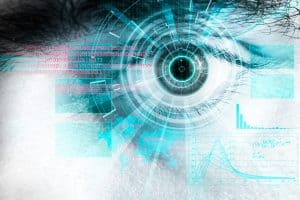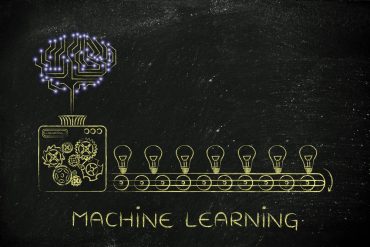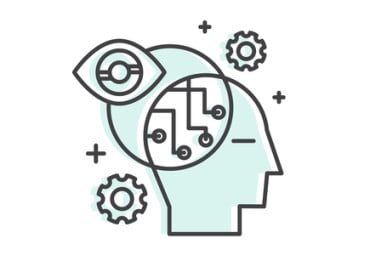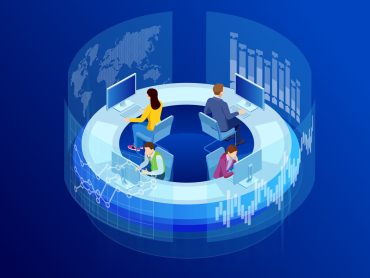
Computer vision efficiencies become especially important as AI applications migrate to operate mobile devices, drones, automobiles, and more.
There was a time when the notion of machines capable of thought was just a Hollywood theme to keep us entertained with blockbuster movies such as 2001: A Space Odyssey, Blade Runner, Terminator, and The Matrix. However, just like Hollywood movies showing men walking on the moon in the 1950s, now true Artificial Intelligence (AI) is becoming fact over fiction.

As far back as the mid-1950s, the first program was designed to mimic human-like skill solving, and over the next twenty years, the concept of AI kept evolving–but not as fast as many predicted. This issue was not with AI’s programming; the impediment resided with a lack of computer storage and the process speeds required to run the learning algorithms. Today, IBM has stated that they can place “more than 20 billion transistors on a fingernail-size chip. That’s roughly ten times as many as are found on today’s chips.”
AI engineers began advancing this field of research, taking advantage of the new process power and data storage. Now we have supercomputers such as Indiana University’s Big Red 200, which features 672 compute nodes, each equipped with 256 GB of memory and two 64-core, 2.25 GHz, 225-watt AMD EPYC 7742 processors. Or University of Florida’s HiPerGator 3.0, with 240 AMD EPYC Rome machines with 1024GB of RAM and 30,720 total cores, as well as 150 AMD EPYC Milan machines with 512GB of RAM and 19.200 total cores. Now, the conditions are right to bring AI to the mainstream.
Applications that require more processing power than most computers could handle are now prime targets for AI programs in most data centers. Banking, healthcare, insurance, and manufacturing; are all areas that now leverage machine learning to produce insights that would be impossible or take too long without AI.
AI’s Cousin, Computer Vision
Computer vision is a subset of AI that uses data to help detect and recognize objects viewed by a computer’s camera. This area of AI recognizes objects and the behavior and conditions of the environment viewed by the computer camera. Computer vision enables a digital understanding of the world around it–giving it the ability to interact with objects. This digital insight enables machines to do mundane human tasks and even advanced duties with remarkably improved outcomes.
AI receives all the press attention, but today, there are thousands of computer vision applications businesses are leveraging to automate or streamline various processes. These applications can be exciting, even lifesaving, such as in the healthcare field where computer vision can detect cancer from CT scans more efficiently than doctors. In highly secure environments, retinal and fingerprint scanning can uniquely identify individuals to enable or restrict access. In addition, wind turbines can now be inspected for defects via autonomous drone footage with high-definition mounted cameras.

But, it’s not all interesting and sexy applications. These computer vision-based applications can also be very practical, such as monitoring products and packages that travel throughout the supply chain logistics journey. The logistics industry is one of the largest industries in the world, so helping to maintain product and package visibility and ID can be hugely valuable to retailers, couriers, manufacturers, and even residential buildings trying to manage deliveries.
Many times, it’s the practical applications we notice the most when it comes to life efficiencies.
For example, some companies apply computer vision technology to help multi-family property managers automate the package handling process and redirect the staff to manage residents rather than sort through and deliver packages. In this case, the mundane application provides an enhanced experience for residents because they no longer have to wait for staff to pick up their packages. Multi-family computer vision applications are also assisting couriers, as they can now deliver packages directly into an intelligent package management room. In this room, the computer vision technology virtually tags and monitors the location of each package, essentially keeping eyes on the packages 24/7 until the owner picks them up.
Aside from multi-family residences, logistics companies also use computer vision to audit the package dimensions traveling through their hubs, enabling senders to easily and accurately measure package dimensions before shipping them. By automating the manual task of measuring package dimensions, logistics companies can enhance the customer experience and reduce costs. For example, Py-tesseract is a tool that enables data extraction from an image and detection option to further process a document after scanning.
See also: The State of AI: Better Computer Vision, Faster NLP
Computer Vision Is Now Getting Attention
These computer vision efficiencies become especially important as AI applications migrate to operate mobile devices, drones, automobiles, and more. Companies such as Qualcomm are advancing AI research with their AI accelerator architecture in the Hexagon 780 Processor and improving detection capabilities of computer vision systems with its Gauge Equivariant Convolutional Neural Networks. Qualcomm’s neural networks are enabling computer vision to better identify objects’ dimensions through improved detections of curved shapes. This work will surely help make AI not only more prevalent in everyday devices and IoT networks but will also improve the performance of applications that utilize computer vision.
Unlike the drama presented in most Hollywood movies, people will continue to embrace AI to do mundane tasks for us, and even the not-so mundane such as driving for us. Life efficiency is the trickle-down effect from those billion-dollar university supercomputers. Soon, the problems they are trying to solve will become the everyday lifestyles of humanity–like having Netflix suggest the perfect movies to watch, Amazon’s ability to deliver almost anything overnight, and even an intelligent package management room that knows exactly who a package belongs to. Practicality is the promise of AI and computer vision, and it will continue to manifest itself in hidden ways long into the future.





























